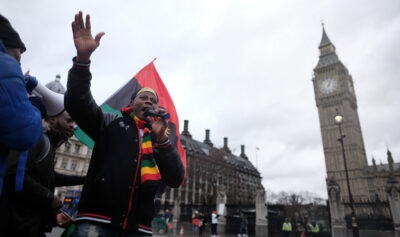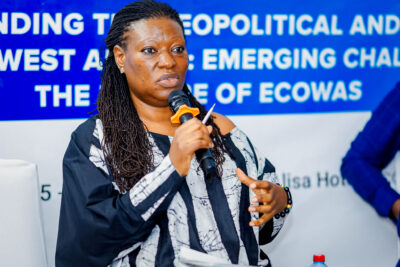Pieced-together scraps from the cutting room floor—that is how anthropologist and archaeologist Shannon Dawdy describes her book American Afterlives: Reinventing Death in the Twenty-First Century. As a metaphor for all the anecdotes, details, and insights that cannot fit into a standard 8,000-word research article, the image resonates with many academics. Sometimes these scraps, though edited out, remain central to our process. In the case of this book, however, the metaphor is more tangible. The project started when the author fortuitously encountered independent filmmaker Daniel Zox on a minibus in Mexico. Out of this meeting grew a collaborative project: a documentary film about contemporary American death practices. The scraps on the cutting room floor were thus both figurative and literal; by picking them back up and putting them together in the form of a monograph, Dawdy has created an innovative book that models a collaborative and transdisciplinary approach to research and writing.
Throughout the book, encounters continue to be a central theme. In their travels across the United States, Dawdy and Zox meet with funeral directors, embalmers, tattoo artists, people from the alternative do-it-yourself funeral culture, green burial developers, Halloween celebrators, cremation portrait artists, cemetery grounds managers, and others. These face-to-face interactions inform the creative process. Their journey unfolds like a picaresque novel where the transformative encounters with people they meet along the way unlock deep truths about American death practices, without the cynicism that often characterizes the literary genre. In fact, the complete lack of cynicism is distinct and valuable. The book testifies to the respect and genuine interest that Dawdy and Zox bring to each encounter.
The characters that spill out from the pages invite us to think about research as collaborative. The collaboration between Dawdy and Zox forms the basis for the project, providing a backdrop to the journey and a frame for reflexivity. The pair explores death practices in America as they travel together, set up the cameras, soundcheck for interviews, observe, and analyze. I can only imagine how many conversations they must have had in cars, coffee shops, and over dinner, conversations that may have flowed in and out of the domain of their research, exploring its connections to everything else—the weather, work, family, memories, music, food. Dawdy and Zox undertake planned interviews but also have chance encounters with people, such as teenagers gathered in a cemetery in Dawdy’s hometown, that in different ways add to the wonderfully collective mosaic of the narrative. The scholarly and the personal are entangled for Dawdy, who often draws on personal memories to inform her analysis.
It is a wild ride. Dawdy calls it “the magpie approach”—alluding, I think, to the myth of the magpie randomly collecting shiny things—and likens it to an adventurous expedition into unknown territory. I would like to take a moment and celebrate that. While it was necessary for anthropology and archaeology as disciplines to deconstruct the historical research expedition approach through the lens of postcolonial critique, we may have thrown the baby out with the bath water. In our current academic culture, so dominated by a neoliberal logic of production, we should take back the right to creative freedom. The discovery of the unknown is a worthwhile research purpose, and we should defend the right to take on a topic without knowing where it will lead. Dawdy and Zox’s travels through America can serve as an inspiring model for curiosity and discovery—not of the exceptional and exotic, as in the frame through which colonial explorers and the researchers that worked in their legacy approached the world, but of the meaningful realities of everyday people. When exploring something as deeply felt and omnipresent as death, it seems imperative to allow human encounters to lead our way.
Death is a universal human experience. We will all die, and during our lifetimes, most of us will experience the death of people close to us. Every culture has ritualized practices that help us through the experience—from disposing of the corpse to making death acceptable within broader cosmologies. It is also deeply felt on an individual level. Archaeologists of death know that the material remains that we study, from the preparation and final placement of the body to a grave’s features, are the results of cultural practices that give form to human needs and values. When we engage with these practices, we have an opportunity to connect to past lived experience, to aspects of humanity that transcend time and space. This connection requires explicit self-reflection and compassion. Meaningful engagement with death entails something radical: seeing the humanity in the other, even across millennia.
This fundamental ethos of human connection across time underlies the structure of the book, which interweaves interviews, historic or contemporary facts about mortuary practices, self-reflection, and memories. Methodologically, the documentary film and the ethnography bring viewers and readers close to the subject, sometimes through Dawdy’s own experiences with death and mourning. One example of this occurs when she reflects on her repeated visits to the Holt Cemetery in New Orleans in the aftermath of Hurricane Katrina. Her professional impulse was to document the damage to a heritage site. Soon after, however, the visits gained a more personal purpose: reaching for connections to the past, to community, and to the practice of intentional care for its members—dead and living—as a form of protection against madness and trauma.
From this patchwork of encounters with other people, with the materiality of the past, and with personal memories emerges real understanding of how we handle death. The encounters that make the book are respectful. There is a reciprocity to the methodology; the author reveals just as much, or more, about herself than about others. The result is a counterpoint to Jessica Mitford’s classic The American Way of Death, which was critical and cynical, whereas this book is curious and compassionate. Where Mitford used her wit and sharp pen to make fun of the commercialization of the death industry in the 1950s and the many seemingly strange ways in which Americans handled death, Dawdy instead seeks to connect to the human experience of grief and loss. She asks how death practices help people to cope with death in the same culture half a century later. This connection to the humanity in the other, as well as the respect for the lived experiences and intimate vulnerabilities we all share, goes to the heart of the anthropological and archaeological death studies that I personally value. It also constitutes a foundation for my own approach to death as an archaeologist.
Toward the end of the book, Dawdy describes the joyful memorial held a few months after her father’s death and the subsequent disposition of his ashes from a bridge, into a pool of calm water forming in the river below. Her mother dropped the paper box into the water, where it gracefully sunk below the surface and settled in the sandy bottom. Slowly, the box started to emanate small air bubbles, and then suddenly, five carp fish began to circle the box in perfect formation. Dawdy describes it as the most spiritual experience she has ever had, adding “I don’t know what else to call it.”
This self-reflective tone, woven into scholarly and documentary registers, is not simply about adding a personal dimension. It is a method of knowing and arguably constitutes a new format for doing scholarly work. In 2023, Sarah Tarlow published the memoir The Archaeology of Loss: Life, Love and the Art of Dying. Like Dawdy, Tarlow is an archaeologist of death, and her scholarship combines an analytical perspective with personal experience. Tarlow’s memoir chronicles the illness and suicide of her late husband Mark, and the aftermath of these events. As with American Afterlives, The Archaeology of Loss allows the reader to connect the cultural, anthropological, and historical dimensions that receive attention in death studies to emotions and practices they can understand as entangled with or analogous to their own experiences. The personal is filtered through the authors’ background in archaeology. They connect familiar observations, experiences, and thoughts to cultural theory and analysis.
The tacking back and forth between the outer world of society, culture, and history on the one hand and the inner worlds of our private thoughts, experiences, and grief on the other refines our understanding of how death affects us as individuals and as societies and of the ways in which mortuary practices mediate values and needs. Perhaps themes such as death, bereavement, and mourning lend themselves especially well to methodologies that move between the personal and the scholarly. Dawdy even states that she would consider it “tactless,” especially when so many people lived with fear, loss, and death during the Covid-19 pandemic, to write about death in any other way. American Afterlives is a beautiful portrayal of the incredibly diverse America that can be found in small communities and in personal narratives across generations.
Death is relational. It is also hard. Yet we must learn to bear with it. When my own parents died, I reflected on how fortunate I was to have had the chance to think about death professionally for so many years before I had to face it personally. American Afterlives makes me think about how much the work of death, mourning, and bereavement is itself a collaborative process. We need to continue to teach and learn together, and this can only happen when we meet each other with compassion and respect.












